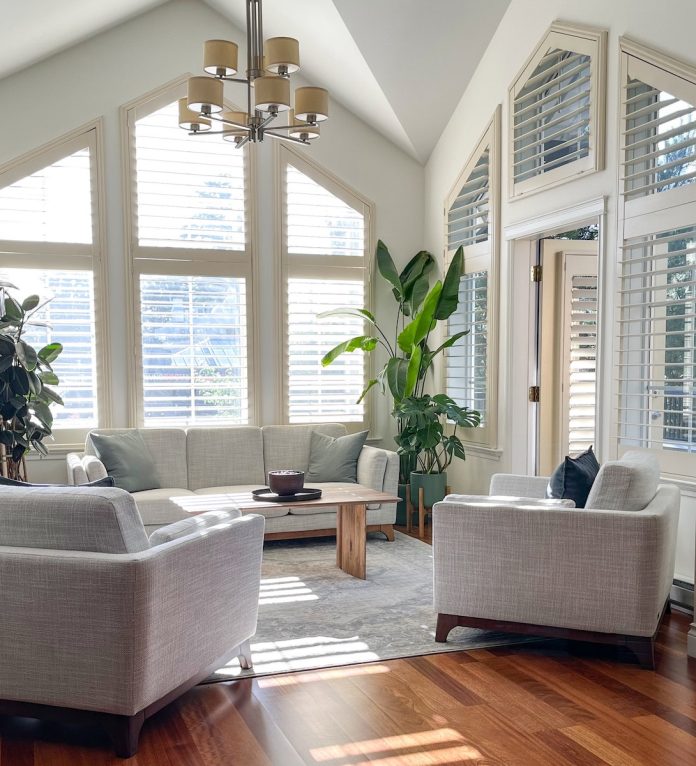How Easy is it to Replace Old Flooring?
Any home renovation project is likely to improve the general aesthetic of your house, but sometimes, the work to make it happen can be trickier than first thought. Take flooring, for example. It is often given the least consideration when refurbing a room. The adage, “if it ain’t broke, don’t fix it.” Springs to mind. Why rip something up and change it if it’s already doing its job? That may be the case if you are only giving the room a gentle makeover, but if you are aiming to create something new, you are going to need to replace that floor if you want the room to look great but how easy is it to replace old flooring?
We looked at how easy it is to replace old flooring. Now, it is not a quick and easy task, and, in some cases, you may just be able to lay the new flooring you want over the old one, but that, too, comes with a few issues of its own. So check out our steps below to ensure you can get the floor you want without causing damage or compromising the look you are going for.
1. Choose a flooring type
Before uprooting the old flooring, it will be worth checking whether the surface you already have can have something simply laid over the top of it. Sometimes, you can simply apply the new surface easily and save yourself lots of time. However, you will always need to consider the thickness of the old and the new flooring and the general condition of the original surface. For example, you could find that a poor-condition old floor may not help the adhesive and floor bond, resulting in a flooring disaster.
Weigh up what the footfall is like in the room you are using before choosing a flooring type. Is it a high-traffic area? Is durability key? Do you require a particular color or style? Maybe you need to factor in how easy it will be to clean. You can go natural with the classic and striking wood, choose the ever-versatile linoleum, or take advantage of the box-ticking LVT flooring. Suitable for all room types, available in a host of styles and colors, easy to clean, extremely long-lasting, and scratch and stain resistant, it makes any floor in any room stand out.
So, let’s get to step one of replacing your flooring.

2. Prepare and plan
You may have chosen the floor type you want to see in the room but replacing flooring is not a small job. In many cases, it can take days to complete. Factor in what needs to be removed, how the surface may need to be prepped, and how long the laying of the new surface will take. For example, a large room where the subfloor needs a lot of leveling could take 3-4 days. For example, the luxury vinyl tiles (LVT) we mentioned earlier can only be laid on a clean, dry, and even surface. Wood also requires a primed subfloor. Otherwise, you can start to see cracks appear. Without factoring in the prep time, you could find the job taking much longer than you expected.
3. Removing your old floor
Depending on the flooring type you will use may determine different levels of work to remove the old one.
If a wooden floor, work with a systematic process. Cutting a strip out with a circular saw will help you lift all other boards. If you pry up the nails one by one, you will also reduce the chance of splitting the boards. When your original floor has been glued to the subfloor, getting it off can be a slow, laborious task. You may be prizing it off to life tiles or scraping away at it to tear up some linoleum, but after that, the bonding agent used to hold the subfloor and top layer together will still need to be removed. Often, the best way to do this is to use a floor buffer and apply the abrasive disc.

4. Prep the subfloor
Now that you may have successfully removed all the old flooring and got rid of any remaining adhesive, there is every chance the subfloor could be pitted or slightly damaged. By leveling it, you allow for a smoother floor when your new surface is laid. Fill any indentations with a floor leveling compound, then sand down any peaks.
Once this stage is complete, you may need to use a moisture barrier. Not all floor types need this but if your chosen material does, then look for tar paper, plastic sheeting, or a vinyl underlay for the best results. If using luxury vinyl tiling, ensure the subfloor is smooth, dry, and even before moving on to the next step.
5. Laying your new floor
Much like the previous stages, how you lay the floor ultimately depends on your chosen flooring. A hardwood floor will benefit more from being nailed down rather than the gluing that is often used for vinyl or linoleum floors. Furthermore, some flooring types need to get acclimatized to the room it is going in. The installation guide from the manufacturer should inform you of the best process for this, but in most cases, simply lay it flat in the room you are planning to use it in. The period required will vary per product, so factor this into your planning time. What may have been likely to take 3-4 days may now have an extra day or two added on!
– If laying hardwood:
Check that your subfloor is level and clean. Then use nails and a pneumatic nailer to get each strip fitted into the subfloor. Hardwood is a material that will need to acclimatize for a few days before being applied.
– If laying laminate:
Without a need for glue or nails, this can be a method preferred by many; however, laminate can be prone to swelling or lifting, making it quite easy for your hard work to be undone quickly. Lay laminate over an underlay that sits on the subfloor but before this, you will need to prep your subfloor to be in good condition. Like the wood, this will need to acclimate for a few days before laying.

-
If laying tiles:
Tiles can present you with a stunning-looking floor, but it can be a painstaking task. Using grout and mortar to hold the tiles down, the timescale it takes to complete can eclipse that of the others we have mentioned so far. In many rooms, tiles can be applied to the subfloor directly, but if you want to use them in a bathroom, a waterproof underlay will be necessary. Tiles can move when not correctly fixed on the floor. The underlay helps prevent this as well as helps reduce the risk of tile cracks.
Work from the back of the room to the front so you can allow those you have laid to have time to set into position properly.
– If laying vinyl:
Some vinyl tiles are the DIY installer’s dream. Simply peel and stick, and you are done. However, this type of tile may not be as easy as you think! To lay them, mark out the center of the room with chalk and make a mock floor by placing your tiles how you want them to fit. If you break your room into quarters, start in the center. Then, work out from each quarter with the tiles as close to each other as possible.
After this, place the tiles in a step pattern making sure the arrows on the back all head in the same direction. This is more important than you think, especially if you have chosen tiles with a distinct pattern.
Tiles must then be cut as you approach a wall, doorway, or corner. Marking this area correctly will determine whether your flooring is a success or a failure! Random gaps in the floor will certainly make it look worse than how it did before! A hack for making sure the corners are correct is to make a template from some card and then use this to cut your tile.
Just remember, if you cut them, remove the backing, and apply before you have double-checked your layout, you will end up with uneven, unorganized flooring.
– Laying Luxury Vinyl Tiling:
Possibly the best possible floor type to install. Many are turning to the option of these durable specialist tiles. Saving you the hassle of figuring out measurements and application yourself, the LVT flooring is applied by specialist flooring installers that carefully ensure each tile is expertly laid. With just a clean, dry, smooth subfloor as the only requirement, the job can be completed much quicker than when looking to use other flooring types. Applied with a permanent glue rather than a click style installation you see with other floor types, LTV tiles show no gaps and no grout.
Made from multiple layers, unlike traditional vinyl flooring, these tiles can be used in any room without fear of water damage. However, like some other materials, you will need to let these tiles adjust to the room temperature for 24 hours before they are laid.





